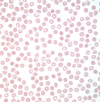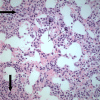A confirmed case of agranulocytosis after use of cocaine contaminated with levamisole - PubMed (original) (raw)
Case Reports
A confirmed case of agranulocytosis after use of cocaine contaminated with levamisole
Jennie A Buchanan et al. J Med Toxicol. 2010 Jun.
Abstract
More than 2 million Americans use cocaine each month (National Survey on Drug Use and Health, Department of Health and Human Services: Substance Abuse and Mental Health Services Administration (SAMHSA) & Office of Applied Studies (OAS), Rockville, MD 2007). Starting in early 2003, South American cocaine cartels began to add levamisole, a pharmaceutical agent, to bulk cocaine prior to shipment to the USA (Valentino and Fuentecilla 2005). A dramatic increase in the prevalence of levamisole in cocaine was noted in early 2008. By October, 30% of cocaine bricks analyzed by the United States Drug Enforcement Administration contained levamisole (Casale et al. 2008). Exposure to levamisole can cause agranulocytosis (Amery and Bruynseels 1992). We report the first confirmed case of agranulocytosis associated with consumption of levamisole-contaminated cocaine in the USA. A previously healthy adult male presented to the emergency department with 5 days of mouth pain. He admitted to chronic active ethanol and crack cocaine abuse. Laboratory studies revealed severe neutropenia, with an absolute neutrophil count of 19 cells/mm³ (normal = 1,500-8,000 cells/mm³). A urine screen for drugs of abuse was positive for cocaine metabolites and opiates. Evaluation of a peripheral blood smear showed leukopenia with severe absolute neutropenia. A bone marrow biopsy revealed recently injured bone marrow showing early recovery. While in the hospital, the patient had little spontaneous bone marrow recovery. He received granulocyte colony-stimulating factor with improvement in peripheral white blood cell counts. The residue in the patient's crack pipe contained 10% levamisole. Subsequently, levamisole was detected in the patient's urine. Levamisole-associated agranulocytosis should be considered in the diagnosis of patients who present with neutropenia and a history or evidence of cocaine use.
Figures
Fig. 1
This image shows the absence of leukocytes in a typical field
Fig. 2
Bone marrow core biopsy, hematoxylin and eosin staining, ×400 magnification, obtained on day 3, prior to the first dose of filgastim. This biopsy shows hypercellular marrow with relative myeloid hypoplasia, megakaryocyte hyperplasia, and a marked left shift in the neutrophil series. Only 0.5% of the cellular marrow was composed of mature neutrophils. Thick arrows point to immature myeloid precursors. Thin arrows point to foci of megakaryocytic hyperplasia
Fig. 3
Crack pipe from this patient. Residue in the pipe contained 10% levamisole by weight
Similar articles
- Agranulocytosis and other consequences due to use of illicit cocaine contaminated with levamisole.
Buchanan JA, Lavonas EJ. Buchanan JA, et al. Curr Opin Hematol. 2012 Jan;19(1):27-31. doi: 10.1097/MOH.0b013e32834da9ef. Curr Opin Hematol. 2012. PMID: 22143075 Review. - Clinicopathologic features of agranulocytosis in the setting of levamisole-tainted cocaine.
Czuchlewski DR, Brackney M, Ewers C, Manna J, Fekrazad MH, Martinez A, Nolte KB, Hjelle B, Rabinowitz I, Curtis BR, McFarland JG, Baumbach J, Foucar K. Czuchlewski DR, et al. Am J Clin Pathol. 2010 Mar;133(3):466-72. doi: 10.1309/AJCPOPQNBP5THKP1. Am J Clin Pathol. 2010. PMID: 20154286 - Agranulocytosis after cocaine use: a case of suspected levamisole contamination in Belgium.
Brabant W, Mazure D, Vantilborgh A, van Heeringen C, Lemmens GM. Brabant W, et al. Clin Neurol Neurosurg. 2012 Oct;114(8):1159-60. doi: 10.1016/j.clineuro.2011.12.012. Epub 2012 Jul 5. Clin Neurol Neurosurg. 2012. PMID: 22770727 No abstract available. - Agranulocytosis from levamisole-adulterated cocaine.
Caldwell KB, Graham OZ, Arnold JJ. Caldwell KB, et al. J Am Board Fam Med. 2012 Jul-Aug;25(4):528-30. doi: 10.3122/jabfm.2012.04.110177. J Am Board Fam Med. 2012. PMID: 22773721 - Immune-mediated agranulocytosis caused by the cocaine adulterant levamisole: a case for reactive metabolite(s) involvement.
Wolford A, McDonald TS, Eng H, Hansel S, Chen Y, Bauman J, Sharma R, Kalgutkar AS. Wolford A, et al. Drug Metab Dispos. 2012 Jun;40(6):1067-75. doi: 10.1124/dmd.112.045021. Epub 2012 Mar 5. Drug Metab Dispos. 2012. PMID: 22393119 Review.
Cited by
- Levamisole-Contaminated Cocaine Use in HIV-Infected and Uninfected Unstably Housed Women.
Riley ED, Kral AH, Cohen J, Dilworth SE, Shumway M, Lynch KL. Riley ED, et al. J Womens Health (Larchmt). 2016 Sep;25(9):936-43. doi: 10.1089/jwh.2015.5532. Epub 2016 May 20. J Womens Health (Larchmt). 2016. PMID: 27203838 Free PMC article. - DARK Classics in Chemical Neuroscience: Aminorex Analogues.
Maier J, Mayer FP, Brandt SD, Sitte HH. Maier J, et al. ACS Chem Neurosci. 2018 Oct 17;9(10):2484-2502. doi: 10.1021/acschemneuro.8b00415. Epub 2018 Oct 5. ACS Chem Neurosci. 2018. PMID: 30269490 Free PMC article. Review. - Cutaneous vasculopathy associated with levamisole-adulterated cocaine.
Tran H, Tan D, Marnejon TP. Tran H, et al. Clin Med Res. 2013 Feb;11(1):26-30. doi: 10.3121/cmr.2012.1085. Epub 2012 Jun 21. Clin Med Res. 2013. PMID: 22723468 Free PMC article. Review. - Levamisole-contaminated cocaine: an emergent cause of vasculitis and skin necrosis.
Souied O, Baydoun H, Ghandour Z, Mobarakai N. Souied O, et al. Case Rep Med. 2014;2014:434717. doi: 10.1155/2014/434717. Epub 2014 Mar 20. Case Rep Med. 2014. PMID: 24778656 Free PMC article. - Levamisole-induced vasculitis.
Abdul-Karim R, Ryan C, Rangel C, Emmett M. Abdul-Karim R, et al. Proc (Bayl Univ Med Cent). 2013 Apr;26(2):163-5. doi: 10.1080/08998280.2013.11928946. Proc (Bayl Univ Med Cent). 2013. PMID: 23543977 Free PMC article.
References
- National Survey on Drug Use and Health, Department of Health and Human Services: Substance Abuse and Mental Health Services Administration (SAMHSA) & Office of Applied Studies (OAS), Rockville, MD 2007. Accessed on April 5, 2009, at http://oas.samhsa.gov/NSDUH/2k7NSDUH/2k7results.cfm#Ch2.
- Valentino AMM, Fuentecilla K. Levamisole: an analytical profile. Microgram J. 2005;3(3–4):134–137.
- Casale JF, Corbeil EM, Hays PA. Identification of levamisole impurities found in illicit cocaine exhibits. Microgram J. 2008;6(3–4):82–89.
- National Institute on Drug Awareness, NIH, & US Department of Health & Human Services, NIDA Info Facts, August 2008. Accessed on April 5, 2009 at http://www.nida.nih.gov/infofacts/cocaine.html
Publication types
MeSH terms
Substances
LinkOut - more resources
Full Text Sources


